The Broke Backpacker is supported by you. Clicking through our links may earn us a small affiliate commission, and that's what allows us to keep producing free content 🙂 Learn more.
The East African coastline might not be the first place you think of for a tropical getaway… but that’s exactly what makes Zanzibar so irresistible.
With its Maldives-like crystal clear water and its exciting wildlife experiences, it’s no surprise there are some unique things to do in Zanzibar. Historically, it was home to the last slave market in the world.
Let’s just say the island is steeped in history—both haunting and inspiring.
Often called Spice Island for being the world’s largest producer of cloves (which had a notable influence on its history), the cultural blend of Arabic, Indian, and Swahili influences only adds to its allure.
But what really makes Zanzibar shine? The people. Their warmth and infectious spirit turn the Swahili saying ‘Hakuna Matata’ from The Lion King into a way of life – laid back, welcoming, and seriously unforgettable.
Whether floating over coral reefs, harvesting spice from the source, or sipping pure Arabica coffee, these top things to do in Zanzibar will leave a lasting impression. Get ready to experience it all because, trust me, the hype is so real!

Unlock Our GREATEST Travel Secrets!
Sign up for our newsletter and get the best travel tips delivered right to your inbox.
25 Top Things to Do in Zanzibar
Zanzibar offers an impressive mix of activities that cater to just about every type of traveller. Solo travellers, families, and couples can dive into the island’s rich history, participate in interactive cultural experiences, or even experience thrilling outdoor adventures.
From ticking off the ancient landmarks to mingling with locals to kayaking over coral reefs, these are thirty of the best things you can do in the Zanzibar Archipelago. If you’re visiting Tanzania, then you’ve got to head to this magical island.
1. Take a Dhow Cruise to Prison Island
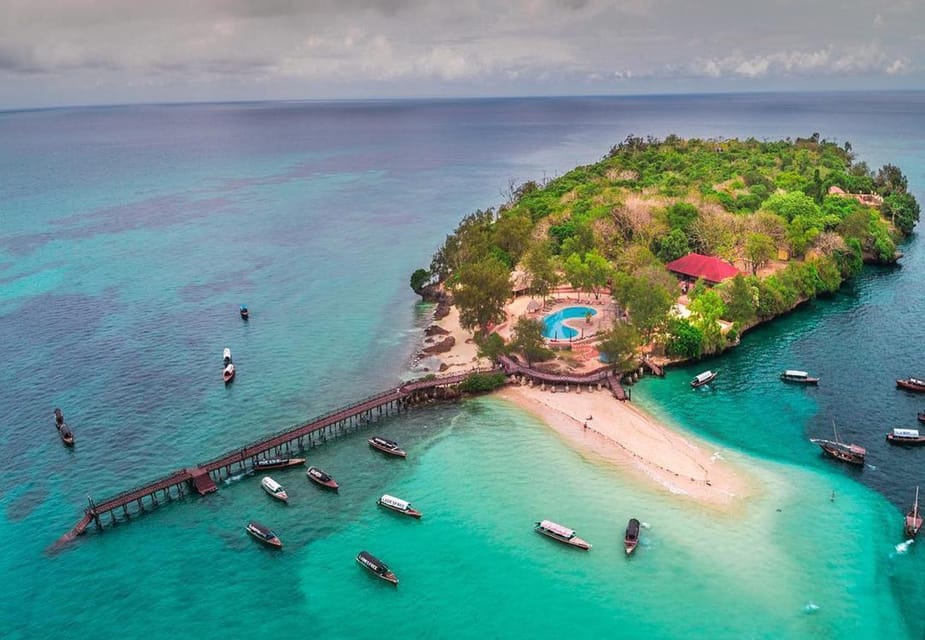
The Broke Backpacker is supported by you. Clicking through our links may earn us a small affiliate commission, and that's what allows us to keep producing free content 🙂 Learn more.
Prison Island formed a big part of Zanzibar’s slave history. While it wasn’t a traditional ‘prison’ per se, it was used by slave traders to house slaves before they were sent off to their new stations. Bleak enough, if you ask me…
Locally called Changuu Island (yes, just like our favourite Balinese refuge), the island is today famous for its population of giant Aldabra tortoises. Better than inmates, wouldn’t you say? It’s a sanctuary for this unique species, which is one of the largest in the world. In fact, some of these tortoises are thought to be some of the oldest living reptiles on the planet. The oldest is a ripe 196 years old!
A day trip to this island is more than enough time to visit the beach, go snorkelling through the coral reefs, and marvel at these centuries-old creatures. But if you want more time, there is a resort on the island with a restaurant and pool.
2. Dive Into The Unknown and Snorkel in the Menai Bay Conservation Area
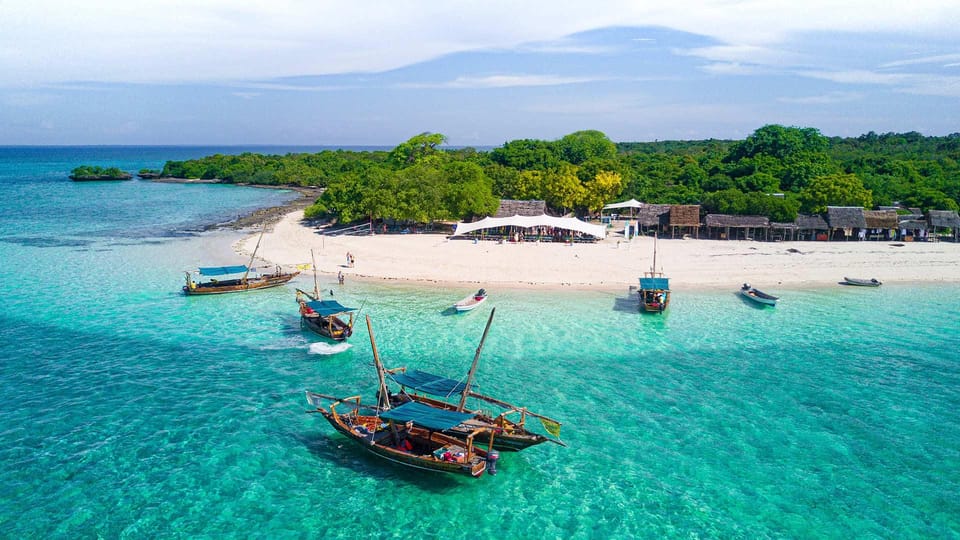
If you thought the Seychelles and Mauritius were Africa’s only coral hotspots, you stand to be corrected. The Menai Bay Conservation Area, a hidden gem in Zanzibar, is the island’s premiere snorkelling and diving destination. It’s teeming with vibrant coral, colourful fish, and even the occasional sea turtle or reef shark. Not the scary type – don’t worry…
Mornings are typically the best time to jump into this clear water, which is usually calm and clear with dim light – perfect for viewing the biodiverse marine life in all its glory. If you’re staying in Zanzibar, you’ll want to check this spot out.
While you’re there, Uzi Island is a small island part of the conservation area. It’s home to stunning mangrove forests, freshwater forests, and seagrass beds that offer a real contrast to the tropical reef sea life. The beauty of Uzi Island lies in its tranquillity. It’s one of those rare places where tourism has barely left a footprint, offering an authentic look into rural Zanzibari life.
3. Visit an Organic Spice Farm
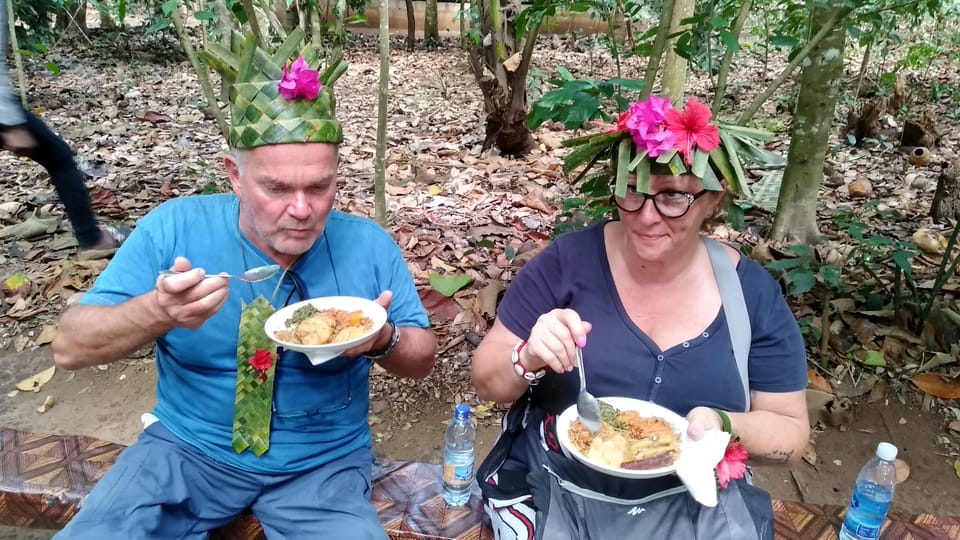
Sometimes called Spice Island because of its spice farms and markets, Zanzibar is basically Africa’s spice cabinet. And let me tell you, visiting a spice farm is one way to experience a sensory explosion in the best way possible. You’ll thank me later.
Fields are planted with rows of cloves, cinnamon, and cardamon plants, and you can taste the fresh fruits and seeds plucked straight from the source. Guides are usually super engaging and knowledgeable, and tours usually start mid-morning before it gets too hot.
On a spice tour, you’ll learn everything from growing, harvesting, and preparing the spices to how they are used when cooking traditional Zanzibari dishes. One thing is certain; you will leave with bags of cloves and other delicious spices for your kitchen back home (not to mention more spice knowledge than you ever thought you needed).
4. Wander Through the Historic City of Stone Town
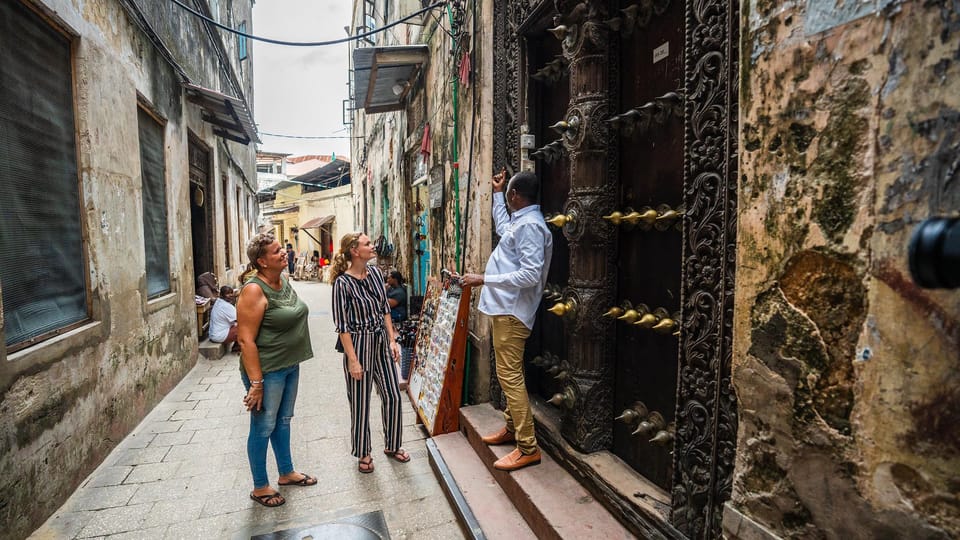
No trip to Zanzibar is complete without a visit to Stone Town. This UNESCO World Heritage Site, once a maritime hub, is now the beating heart of modern-day Zanzibar. For centuries, different nationalities have visited this trading port city, which has left it with a fascinating blend of Arabian-style townhouses, European-inspired infrastructure, and Indian merchant homes and palaces.
The main attractions are the spice market (with its own special mention later on), the Old Fort, and the Hamamni Persian Baths. Stroll the winding alleyways on foot with a guide or in your own time. You’ll pass by carved doorways, shops and spazas, and Swahili spice markets along the way. It’s one of the best attractions of Tanzania, for sure.
Pro Tip: Join a guided tour of Stone Town to get a better idea of the city layout. After this, visit alone, amble through all the alleyways, and soak up the lively atmosphere in your own time.
5. Harvest, Chop, and Taste Your Way to Dinner with a Farm-to-Table Cooking Class
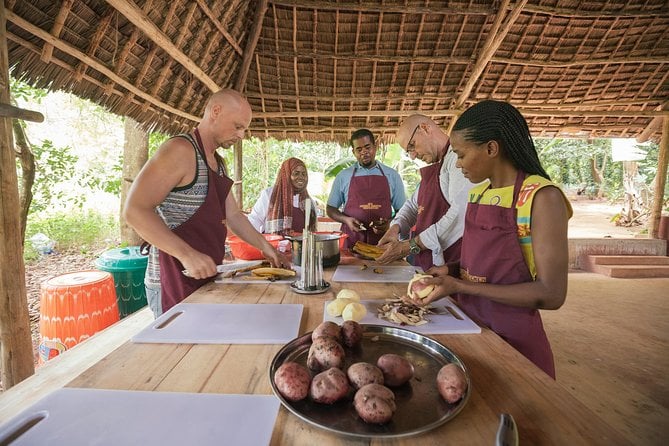
If you’re anything like me, participating in a cooking class will be high on your list of must-dos in Zanzibar. With cultural influences from Africa, Arabia, India, and even Europe, Zanzibari cuisine offers a little taste of everything. Not to mention the abundant access to some of the world’s highest-quality fresh spices.
Most cooking classes start with a visit to the local market and spice farm, where you can purchase the freshest ingredients of the day before rolling up your sleeves to prepare some local dishes. The chef will lead you through layers of regional culinary traditions, explaining the significance of each spice along the way.
Of course, you’ll get to eat what you make. Most classes run mid-morning or mid-afternoon so that you can enjoy your feast for lunch or dinner. After this, you’ll be ready to impress at your next dinner party!

Wanna know how to pack like a pro? Well for a start you need the right gear….
These are packing cubes for the globetrotters and compression sacks for the real adventurers – these babies are a traveller’s best kept secret. They organise yo’ packing and minimise volume too so you can pack MORE.
Or, y’know… you can stick to just chucking it all in your backpack…
Get Yours Here Read Our Review6. Spend the Day with Local Artisinal Women in Jambiani Village

Jambiani is one of the island’s most famous local villages. Visiting this small village is a particularly powerful experience because of the groups of women who call it home. This female-led village is known for its seaweed farming and artisanal crafts – both practices passed down through generations.
During a tour, you can spend the day with these local women, learn about their sustainable seaweed farming practices, and even try your hand at weaving. It’s a place where tradition, empowerment, and creativity thrive. And on top of this, the easy-going vibes are contagious.
Pro Tip: The Seaweed Center isn’t open year-round. If possible, plan to go when the tide is low, as this is the best time for seaweed harvesting. Oh, and bring along your beach wear because Jambiani also has a beautiful palm-tree-lined beach.
7. Snorkel Over Crystal Clear Reefs Around Tumbatu Island
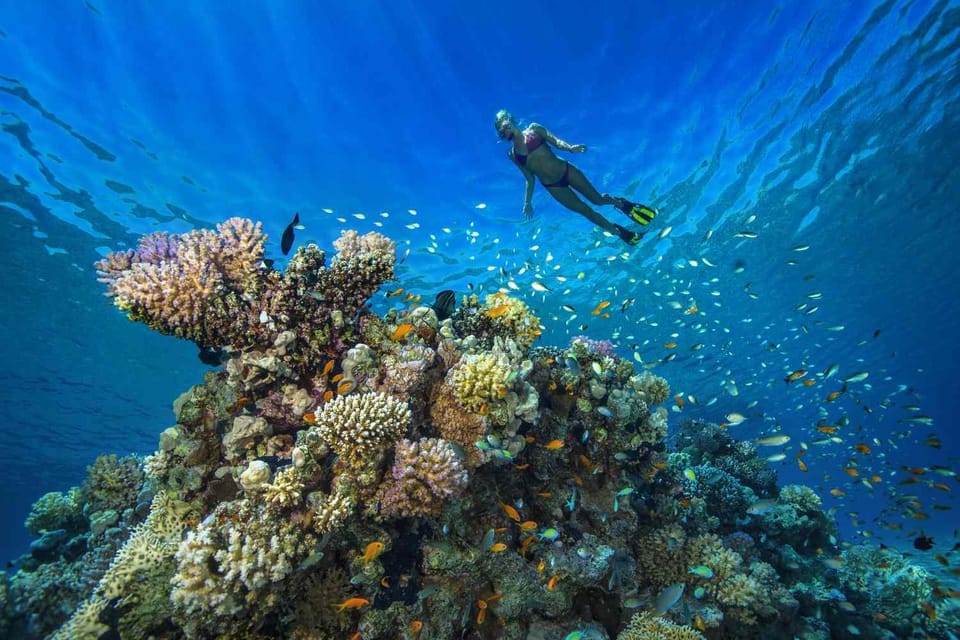
I know I’ve mentioned a couple of snorkelling spots already, but can you blame me? The island is teeming with sea life, and Tumbatu is one of the least busy and most rugged slices of marine biodiversity.
Most of this island remains untouched by tourism. To go onto the island, you need permission from the local Watumbatu elders. As one of the most unusual things to do in Zanzibar, you can learn about the local traditions and ancestral history of this net-and-trap fishing village.
But for a simple day trip, tourists can visit the coral reefs that fringe this remote rural island. The area is also home to some of the region’s best dive sites for those dedicated to getting their divers certification. It’s not too deep, and most reefs are protected from strong rip currents.
8. Visit the White Sand Beaches in Paje Village
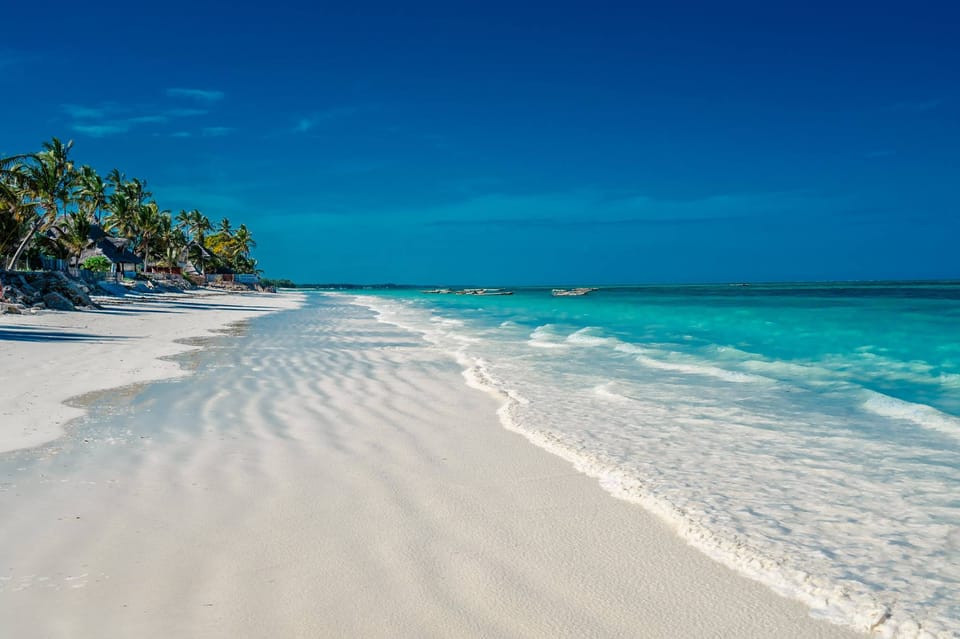
Paje Beach is one of those places that makes you believe heaven really does exist. White sand, tall swaying palm trees, and clear, warm water are to be expected. This area is particularly popular with backpackers, with a relaxed atmosphere, great activities like scuba diving and kitesurfing, and some affordable hostels to stay in Zanzibar.
But the highlight of this beach town is its seaweed farms. Images of women wearing colourful outfits and straw hats are iconic scenes in the seaweed plantations. Seaweed here is grown in rows in the shallow and is easily one of the most unique farming scenes you’ll see.
Seaweed farming has become the region’s third-largest industry, as most of the haul is sent abroad to be used in pharmaceutical and cosmetic products.
9. Join a Cultural Tour of Nungwi Village

One of the best things to do in Zanzibar is to spend an afternoon at Nungwi Village. This village on Unguja Island is the epicentre of the Zanzibari dhow building. For centuries, craftsmen have worked on these beaches, creating these beautiful vessels by hand.
It’s also a thriving fishing village, which you’ll quickly be shown if you join a cultural tour of the island. If you’re not in the mood for a structured tour, its beautiful beach is an easy place to spend a day.
Pro Tip: While overflowing with culture and history, Nungwi is also one of Zanzibar’s best places for nightlife. It’s a lively area with beach resorts, hotels, bars, and restaurants, which means fun night-time entertainment rolling into the early hours of the morning.
10. Immerse Yourself in the Buzz of the Darajani Market
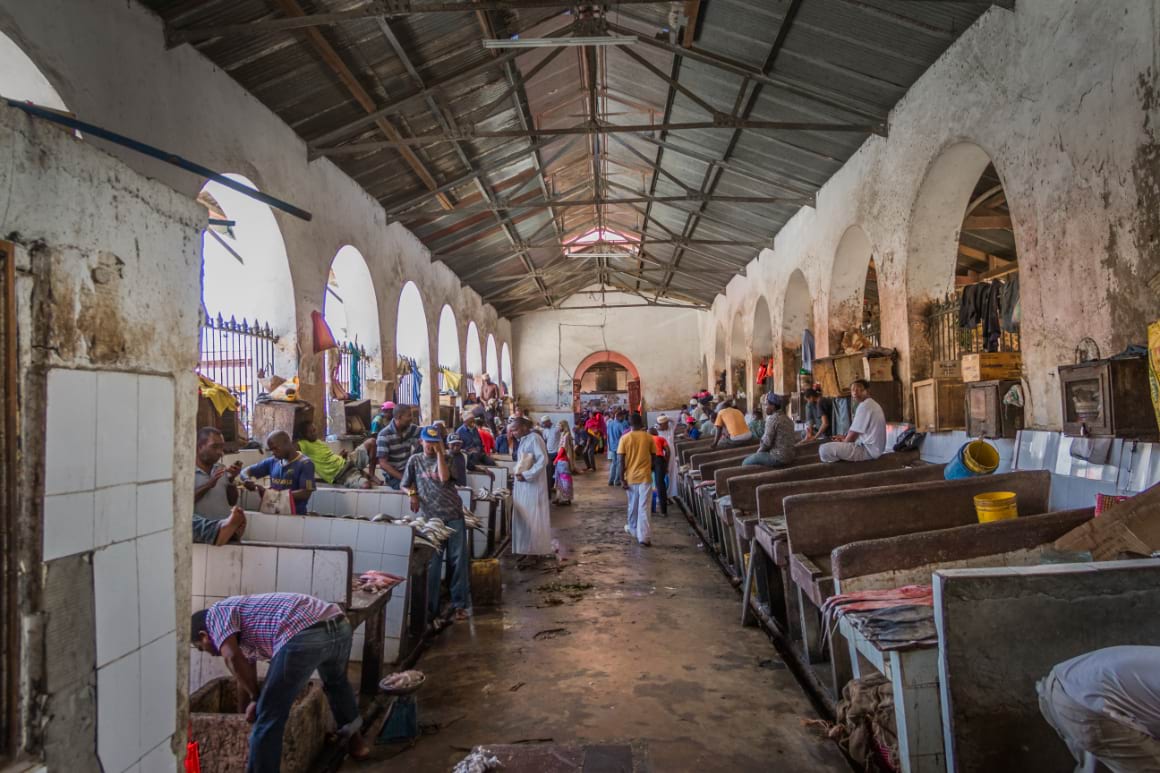
If Stone Town is the core of Zanzibar, the Darajani Market is the pulse that fuels its energy. This aromatic spice market is where you will find most of the spices produced around the islands, from cloves to cinnamon to cardamon and nutmeg.
The one thing I recommend doing when you first arrive in any new country or city is visiting the local market or grocery store. There is so much hidden context to be uncovered by the food and products sold at a local market, don’t you agree?
While spices are the main attraction, you can also buy fresh fruit and vegetables, seafood, and even handmade crafts and textiles at this market. The Darajani fish market is a must-visit section of the bazaar. It gives a real taste of daily life on the islands.
Pro Tip: Cash is king in Africa. When strolling through markets, make sure you carry smaller changes in the local currency (the Tanzanian shilling).
11. Paddle The Nungwi-Kendwa Waters on a Transparent Kayak
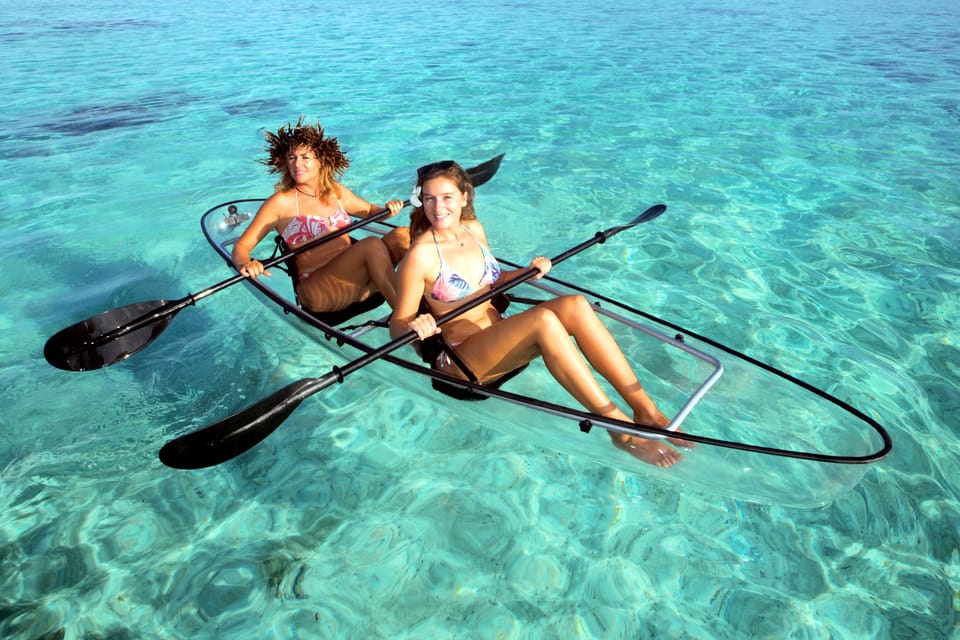
If Nungwi Beach is the bustling hub of nightlife and beach bars, Kendwa Beach is its little sibling. Kendwa is a more remote and quiet beach in Zanzibar North, which is recognized for its static tides and resulting great swimming and snorkelling conditions.
One of the best things to do in Zanzibar is to cruise between these two beaches in a transparent kayak. You might be thinking – this sounds like a tacky Instagram photoshoot thing to do – but I rate this as a really fun and easy activity to do with kids. You can rent kayaks for as long as you please, paddling off into the distance without a guide to kill the vibe.
Pro Tip: Kendwa Beach is one of the best places to watch the sunset over the water. After sunset, you can pull the kayak onto the beach and enjoy sundowners at one of the many beach bars around Nungwi-Kendwa.
12. Take In the Natural Wonders of the Kuza Cave
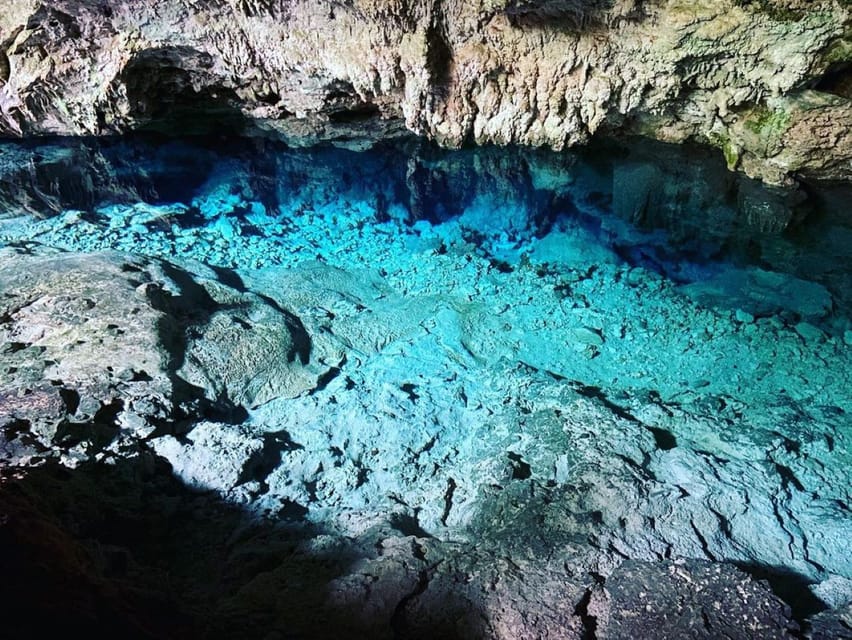
The Kuza Cave is a freshwater lagoon tucked away in the small, hidden jungle village of Jambiani. While not for those with claustrophobia, it is one of the most beautiful caves I’ve ever been in, with clear blue (and cool) water surrounded by ancient limestone rock formations.
Most tours will offer you the chance to swim into the cave and check out some interesting artefacts once found in the cave. If you’re big on caves, there are another two popular caves to visit in the archipelago, including the Swahili Cave and the Maalum Cave.
The best time to visit is in the morning, when the cave is quiet and light streams in through the rocks, creating a magical ambience that can make anyone believe in the water’s supposed healing properties.
13. Visit the Shiraz Ruins on Tumbatu Island
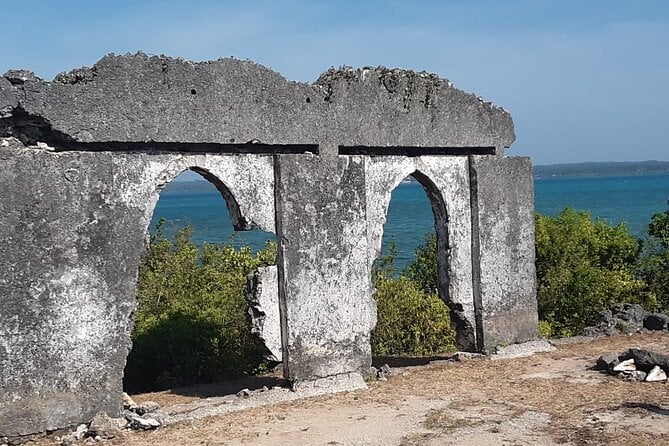
The Shiraz Ruins tell the story that the Shirazi people were the earliest settlers of the islands, arriving as far back as the 12th century. The Shirazi people, AKA the Persian and Iranian descendants, have always been drawn to this island in particular. If you want to learn why and are looking for a cool historic thing to do in Zanzibar, you might want to join a tour of Tumbatu.
Tumbatu is the third largest island in Zanzibar, and it is about a thirty-minute dhow trip from Nungwi or Unguja. Towards the southeast of the island, the Shirazi ruins at Makutani are supposedly the remains of one of the first-ever communities on the island.

Stash your cash safely with this money belt. It will keep your valuables safely concealed, no matter where you go.
It looks exactly like a normal belt except for a SECRET interior pocket perfectly designed to hide a wad of cash, a passport photocopy or anything else you may wish to hide. Never get caught with your pants down again! (Unless you want to…)
Hide Yo’ Money!14. Spend the Day at Starfish Beach in the Blue Lagoon Atoll
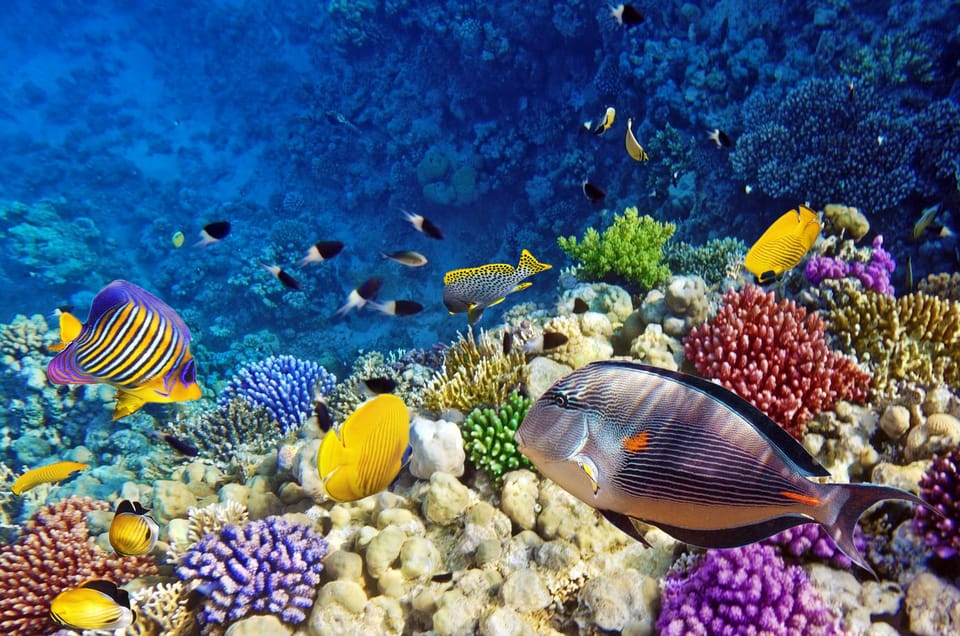
If you’re visiting with young kids, the shallow and sheltered coral gardens at Blue Lagoon are some of the safest reefs to snorkel over. The lagoon is a shallow tidal pool on Zanzibar’s eastern coast, famous for its incredibly bright blue waters – hence its name…
Just like Blue Lagoon is named for its blue watercolour, Starfish Beach is named for its abundance of starfish. And when I say starfish, I mean giant starfish in hues of red, orange, and even purple casually hanging out on the soft white sand like they’re posing for your photograph.
To reach Starfish Beach, you must take a boat from Michamvi or Pongwe along the coastline. While it’s not a super long journey, the journey itself does mean that fewer tourists choose to visit this beach. And you know what that means – no crowds!
Remember to take care of the starfish. Don’t pick them up or disturb them!
15. Sip on Arabica Coffee at Zanzibar Coffee House
Coffee fans, this one is for you. Zanzibar Coffee House is a cosy, relaxed cafe in a boutique hotel. One of the best affordable things to do in Zanzibar is to test out locally grown Arabica coffee in an impressively African setting, and this is undoubtedly the place to do so.
While the aroma of the roasting beans will get you going from the moment you arrive, I encourage you to look around and admire the traditional Arabian influence of this building, which is one of the oldest in Zanzibar.
Coffee is always best in the morning (in my opinion, at least). Enjoy your brew on the rooftop terrace, as the sun rises over the roofs of Stone Town. My recommendation is the spice coffee.
I also recommend that any serious caffeine heads make the time for a traditional coffee ceremony. Plenty of coffee shops around Stone Town allow visitors to watch their traditional roasting process, after which the freshly brewed drink is served in thin Arabian cups.
16. Indulge in Fresh Seafood at The Rock Restaurant
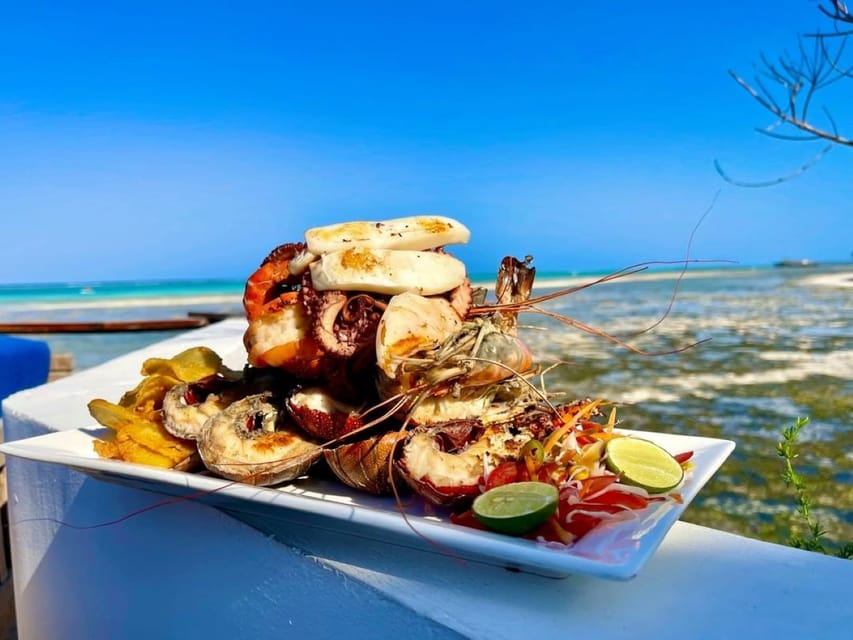
If there is one restaurant I would recommend in Zanzibar, it would be The Rock. Sure, it might be slightly overpriced and touristy, but can you blame it? The restaurant is literally perched on a rock in the Indian Ocean and has rightfully earned recognition as a Zanzibar icon.
While you can walk to the island during low tide (barefoot, of course), you might need to take a boat back once the tide rolls in. Trust me, it’s all part of the fun.
The seafood here is as fresh as it gets. Think grilled lobster, calamari, and prawns, all paired with sweeping views of the water. It’s just about an hour’s drive from Stone Town and easy to get to by taxi.

Drink water from ANYWHERE. The Grayl Geopress is the worlds leading filtered water bottle protecting you from all manner of waterborne nasties.
Single-use plastic bottles are a MASSIVE threat to marine life. Be a part of the solution and travel with a filter water bottle. Save money and the environment!
We’ve tested the Geopress rigorously from the icy heights of Pakistan to the tropical jungles of Bali, and can confirm: it’s the best water bottle you’ll ever buy!
View on REI Read the Review17. Get To Know the Culture with a Traditional Healer
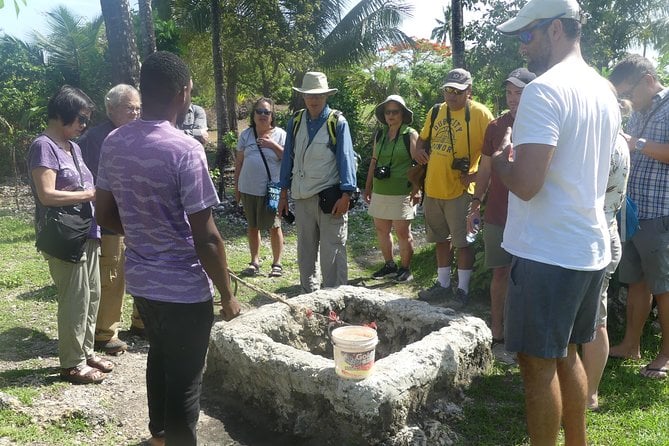
Spending time with a traditional Swahili healer is a once-in-a-lifetime cultural experience I recommend to everyone visiting Zanzibar. Locally called a ‘manhwa’ or a ‘babu,’ traditional healers practice ancient healing techniques using plants, local herbs, and rituals.
Each culture has its own terminology for its traditional healers, and visiting the Swahili healers offers an interesting glimpse into the Zanzibari traditions that have been passed down from generation to generation.
Many island tours include a stop at a traditional healer, but you can also arrange private meetings with a local tour guide. It’s an eye-opening must-do in Zanzibar that will leave you with a deep sense of appreciation for the local culture. Dress respectively, and arrive with an open mind!
18. Take In the Peace and Quiet from the Nakupenda Sandbank
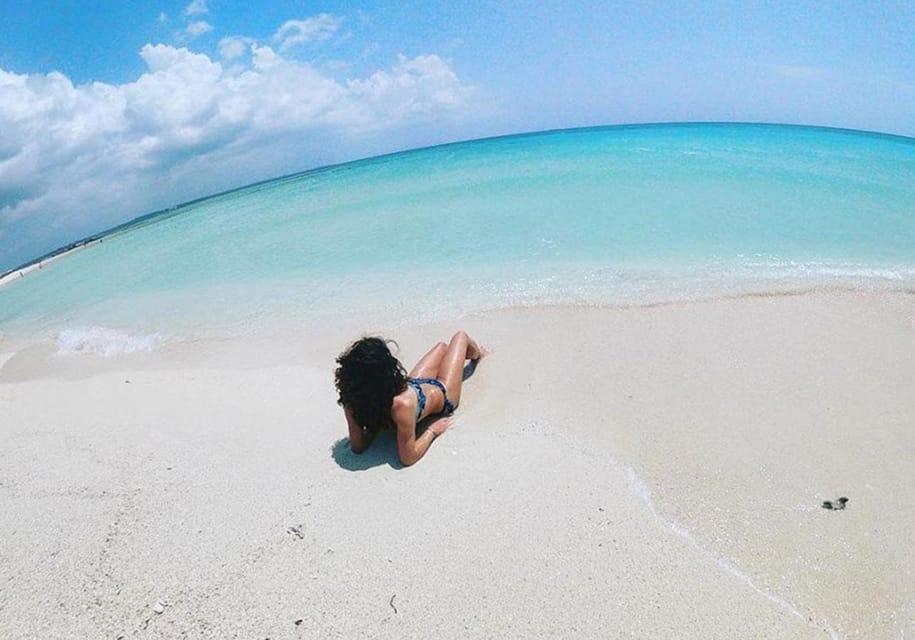
In a busy world dominated by technology and development, it’s not too often we find a place totally untouched and remote. That’s where Nakupenda comes in. The Nakupenda Sandbank is a pure, undeveloped stretch of sand surrounded by nothing but water. Each day at high tide, the water rolls over the sand and resets the sandbank for a new day – there is something so beautiful about this.
It’s just a short boat trip from Stone Town and is one of those surreal places where you can totally disconnect from reality.
Thanks to the ebb and flow of the tide, it’s a pristine location to swim, sunbathe, or just sit with your thoughts. Just make sure to time your visit with low tide because once the tide comes in, it’s game over until the next day.
19. Sip a Cocktail (or mocktail) at Africa House Hotel
The Africa House Hotel was originally built as a home for a Sultan in the 19th century. Today, it remains one of Stone Town’s most iconic landmarks.
Back in its heydey, the house was known as The English Club, a members-only club for expat English travellers. While patronage was limited back then, today, the trendy hotel is one of the best places in Zanzibar for a nightcap.
Regardless of its history, sitting on the rooftop with a drink in hand, watching the sun set into the Indian Ocean, is unbeatable.
Budget Tip: Budget travellers don’t have to book a room to enjoy the space. Simply ask to go to the bar, and you can get all the sunset privileges just by buying a couple of drinks.
20. Sail on a Traditional Dhow at Sunset
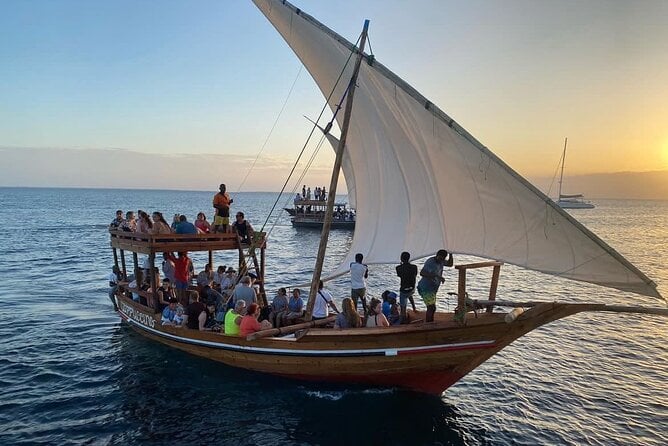
Sure, you might hop on and off a few dhows to get around the archipelago. But if I had to recommend one activity, it would be to take a deliberate cruise on a dhow at sunset.
Local fishermen have used these handcrafted wooden boats for centuries, and a sunset cruise offers a front-row seat into the region’s maritime history (not to mention – the views).
Drinks are usually included in the rate if you charter a dhow for sunset. These trips are typically affordable and easy to book. Just remember to bring a lightweight layer for once the sun goes down.

Get 15% OFF when you book through our link — and support the site you love so dearly 😉
Booking.com is quickly becoming our go-to for accommodation. From cheap hostels to stylish homestays and nice hotels, they’ve got it all!
View on Booking.com21. Follow a Street Food Tour Through Stone Town
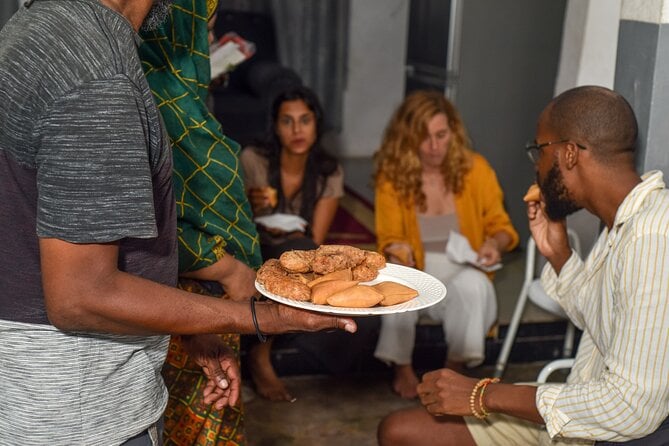
If you want to experience the rich cuisine of Zanzibar, a street food tour through Stone Town is the place to start. Walking through the narrow, winding alleyways, you’ll be able to sample local favourites like the Zanzibari pizza, urojo soup, and freshly grilled fish.
The flavours here perfectly reflect the islands’ unique history as a crossroads between African, Arab, Indian, and European influences. Local guides are usually well-versed in local history and the Stone Town food scene and will no doubt give you an insider’s perspective on things.
Pro Tip: Bring along cash and come with an empty stomach. Ask your guide to take you to the lesser-known spots for the island’s most authentic ‘taste’.
22. Soar Through the Sky with a Tandem Skydiving Experience
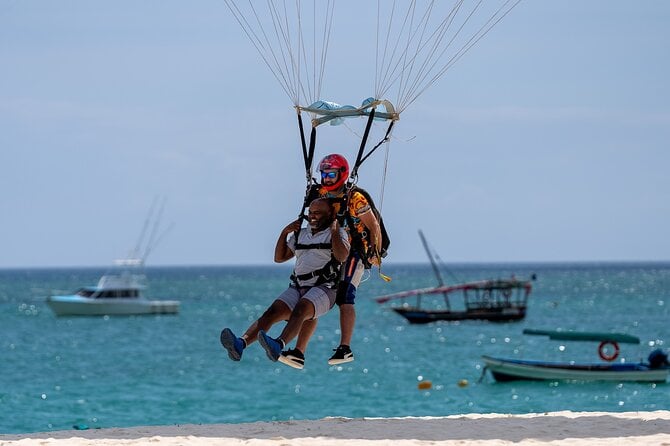
If we’re being honest, I haven’t done this skydiving experience myself, so I can’t speak to this as one of the best activities in Zanzibar. I’m afraid of heights, and if you are too, do yourself a favour and skip to the next activity…
But if you’re the type who craves adventure and a whole lot of adrenaline, Skydiving over Zanzibar is one of the best ways to view the coastline and islands from a bird’s eye view. Skydiving is hardly cheap, but this is one of the more affordable places to jump out of a plane. Take from that what you wish.
I’m not sure what freefalling through the sky would feel like, but I hear it’s an exhilarating moment of adrenaline and freedom. The experience lasts between two and three hours and ends with a soft sandy landing at Nungwi Beach – not bad for a landing spot.
23. Race Through Local Farms and Villages on a Quadbike
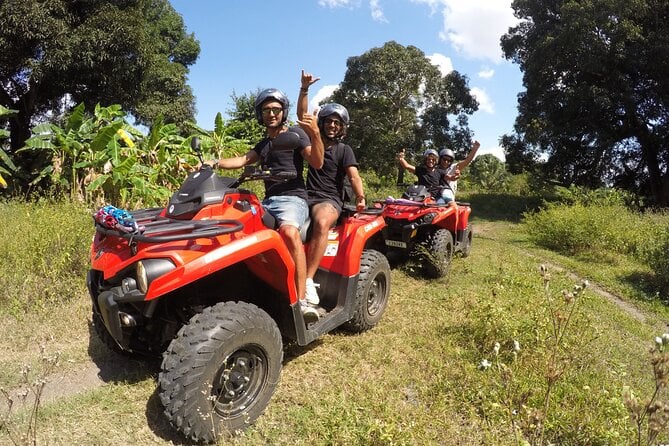
Exploring the countryside on a quadbike is a fun and adventurous way to see the lesser-known parts of the island. Quadbikes are easy to drive and typically safe, although it’s always good to follow a guide and stay on track.
Only possible with a tour, quad biking adventures will take you through small local villages and open farmland. Depending on your guide’s chosen trail, you could pass through forests, baobab alleys, and even past the famous caves. Whichever route you take, you’re guaranteed outstanding views.
This fun thing to do in Zanzibar lasts between three and four hours and has three main stops. Taking photos is allowed (and recommended). The best part about this activity is being off the beaten path. The second best part? The wind in your hair!
Pro Tip: Wear closed shoes and sunglasses. Dusty paths tend to kick up some dirt.
24. Spend the Day at the Chumbe Island Coral Park
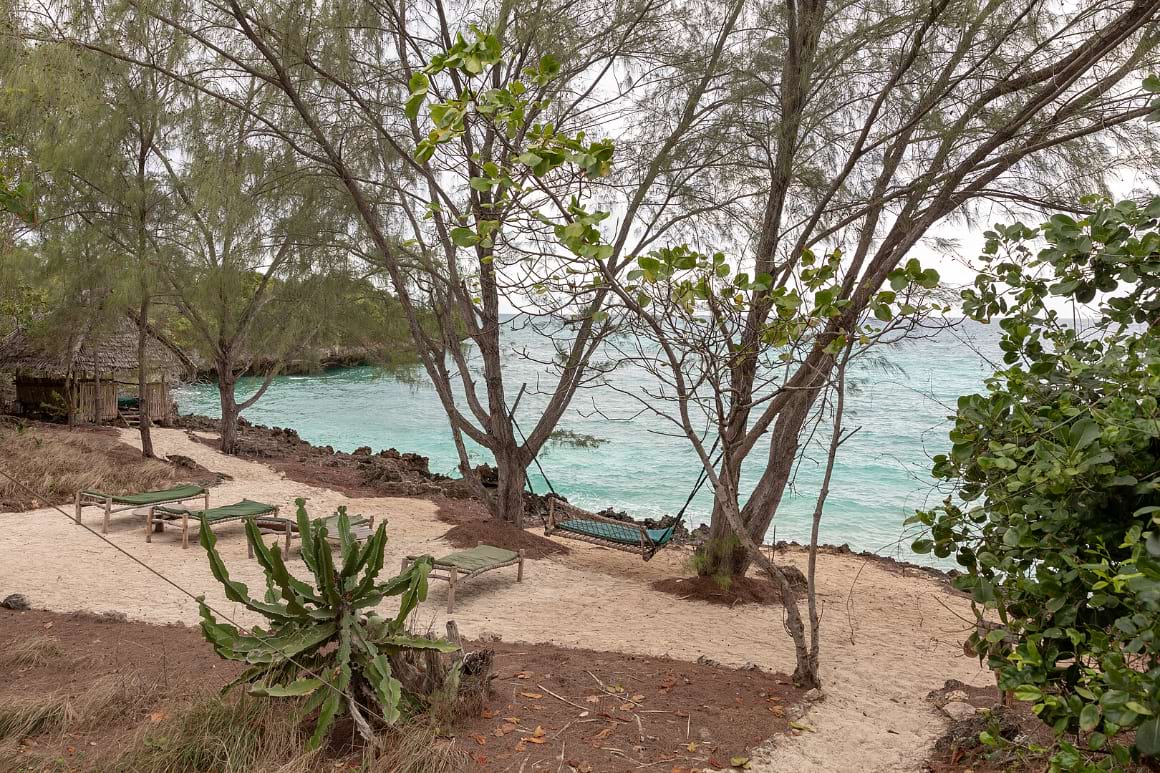
This isn’t the first coral reef experience I’ve recommended, but it really is one of the best. Chumbe Island Coral Park is a protected private reserve with a big conservation focus. I recommend it to anyone who loves the beach, but mainly for those interested in marine biology or conservation.
The island is small and hardly ever crowded since the numbers are managed. When you aren’t snorkelling over the protected reef, you can stroll around the forest reserve, which is home to coconut crabs and even some rare marine turtles.
For luxury travellers, there is also a five-star lodge on the island that offers authentic Zanzibari accommodation with the promise of sustainability.
25. Sample Traditional Food at the Forodhani Gardens Night Market

The Forodhani Night Market is where Stone Town comes alive after dark. Located along the main waterfront, this busy night market is famous for its diverse street food offerings. You’ll find everything from seafood skewers to curry pots to the famous Zanzibari pizza.
The market has deep roots in Zanzibar’s trading history, with a blend of Arab, Swahili, and Indian culinary influences on full display. Besides the food you’ll buy, it’s a totally free thing to do in Zanzibar – score!
Head straight for the urojo soup, a thick mango soup (yup, you heard right) served with chickpea fritters and chutney. Finish things off with a glass of hand-pressed sugar cane juice with fresh ginger and lime.
Budget Tip: If this wasn’t already obvious, markets are one of the most affordable places to eat out. You could enjoy a meal with a drink and a sweet treat here for under $7. Bring cash, and try a little bit of everything!
25 Things to Do in Zanzibar: City Map
How to Get Around Zanzibar
Zanzibar is a pretty untouched island. There are a handful of traffic lights (if that), and most roads are unpaved. And you know what that means – getting around is all part of the fun. Having said that, for Africa, it’s not so bad and I had an easier time than when I recently visited Bostwana.
One of the safest ways to get from A to B is by taxi. Registered taxis are easy to find, and you might pay around $20 for a drive from the airport to a hotel in Stone Town.
For a more local experience, tuk-tuks are a fun option. They cost between $5 and $15 for short rides. I like to use these to get to the beach and market when I don’t have luggage with me.
If you want to explore the best places in Zanzibar in your own time, consider renting a car or a scooter. Cars are more pricey (between $30 and $80 per day), while scooters cost around $15 to rent for one day.
While cars are ideal for travelling families, roads are often unsigned and challenging to follow. For some reason, manoeuvering a scooter through narrow dirt roads feels much less daunting than a big car.
Don’t Forget Your Travel Insurance for Zanzibar
Not to be a negative nancy, but travelling to Zanzibar (or anywhere, for that matter) without travel insurance is risky business. Insurance can protect you against unexpected events that might cause flights and reservations to be cancelled, not to mention lost belongings.
Medical care on the islands can be costly, especially for emergencies. For peace of mind, good travel insurance will assist you with navigating any issues you might encounter. An adventure awaits you, but don’t forget to insure it!
ALWAYS sort out your backpacker insurance before your trip. There’s plenty to choose from in that department, but a good place to start is Safety Wing.
They offer month-to-month payments, no lock-in contracts, and require absolutely no itineraries: that’s the exact kind of insurance long-term travellers and digital nomads need.
SafetyWing is cheap, easy, and admin-free: just sign up lickety-split so you can get back to it!
Click the button below to learn more about SafetyWing’s setup or read our insider review for the full tasty scoop.
FAQs on Things to Do in Zanzibar
Here are some quick answers to common questions about what to do and see in Zanzibar
Final Thoughts on The Best Things to Do in Zanzibar
The best things to do in Zanzibar are about as varied as the vibrant colours of a sunset over the Indian Ocean. Each corner of every street tells a new story, and every beach will add a new layer to your understanding of this African island.
Do yourself a favour and embrace the local customs. Bring along respectful clothing to show consideration for the local culture and try all the traditional food you can – you won’t be sorry.
One of my favourite experiences was a simple sunset cruise on a dhow. Gliding over the calm waters as the sky is set alight with orange hues is something I’ll never forget. Oh, and I can’t recommend a food tour or a local cooking class more. The island is literally famous for its spice farms and markets, so you’re in for a flavour explosion. If you know, you know.
While the islands are small, they sure do pack in a fair share of culture, history, architecture, and stunning landscapes! I hope you enjoy your stay in Zanzibar.
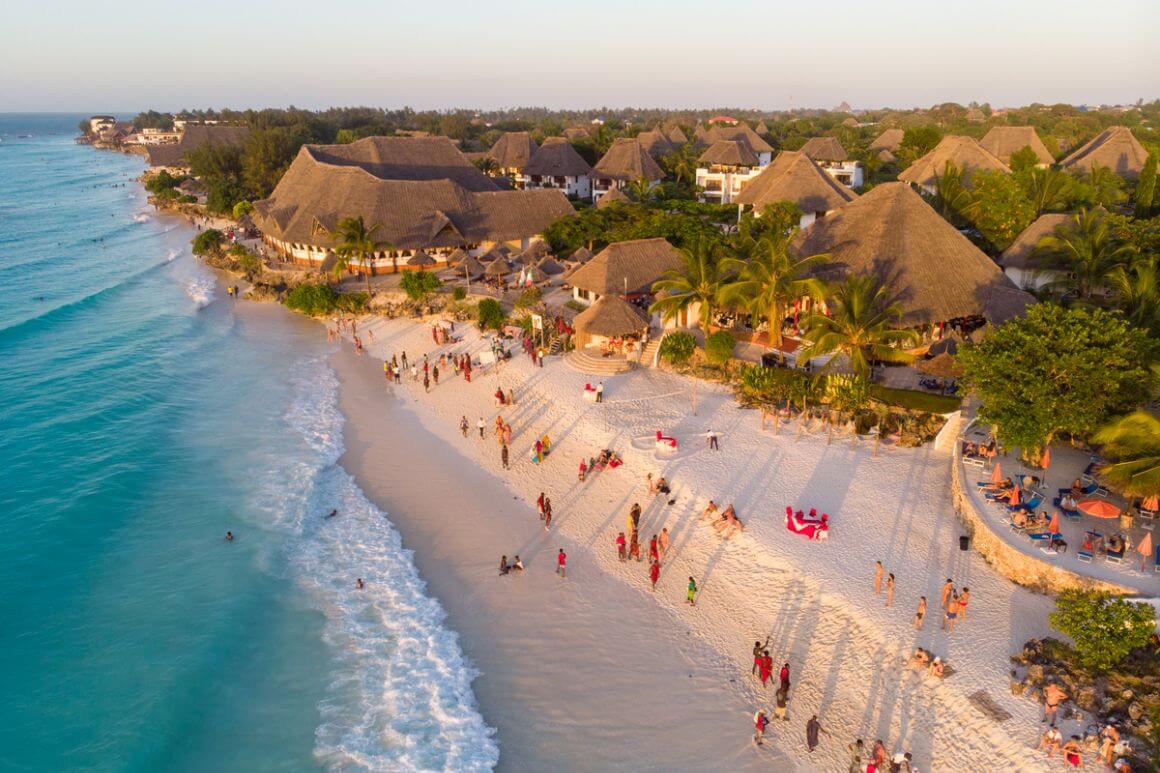
- Check out our ultimate guide to backpacking in Tanzania.
- Have a look at our guide to where to stay in Zanzibar to choose the perfect area!
- You’ll need a hostel in Zanzibar – it’s a great way to start your trip!
- Our in-depth backpacking packing list has all the info you’ll need for your trip.
Buy Us a Coffee!
A couple of you lovely readers suggested we set up a tip jar for direct support as an alternative to booking through our links. So we created one!
You can now buy The Broke Backpacker a coffee. If you like and use our content to plan your trips, it’s a much appreciated way to show appreciation 🙂








